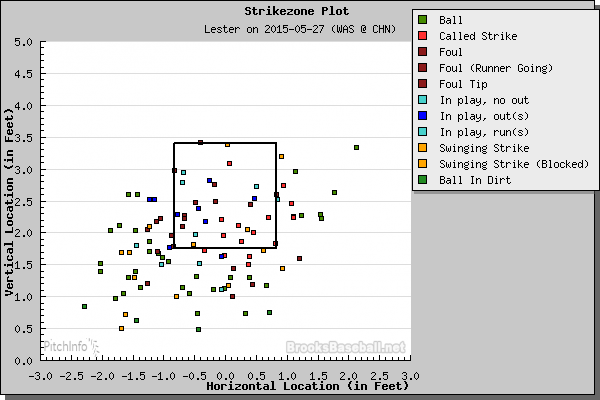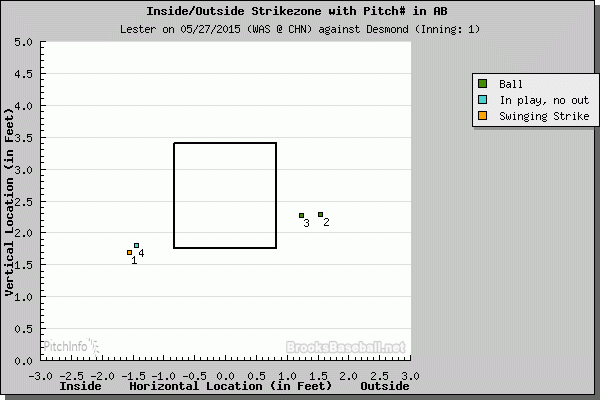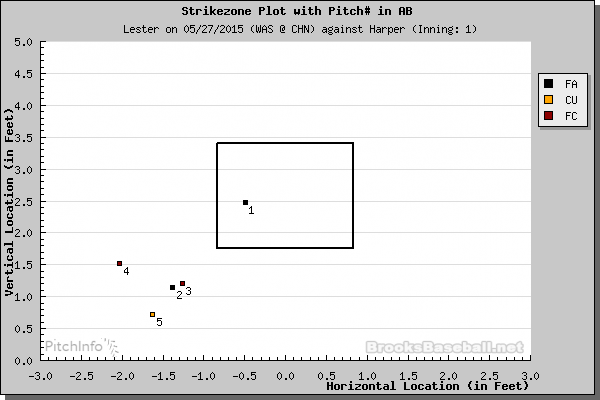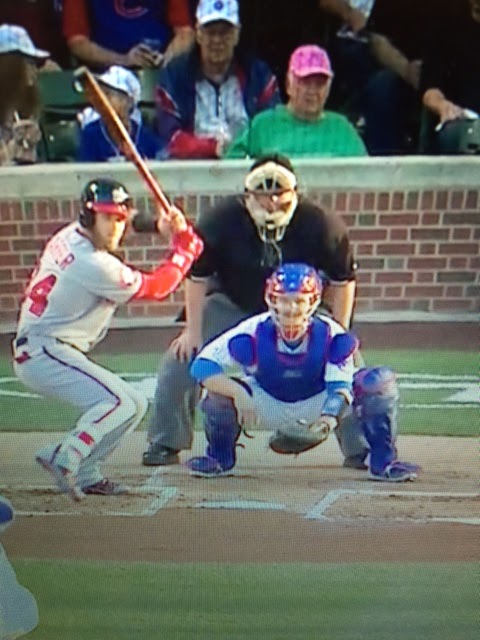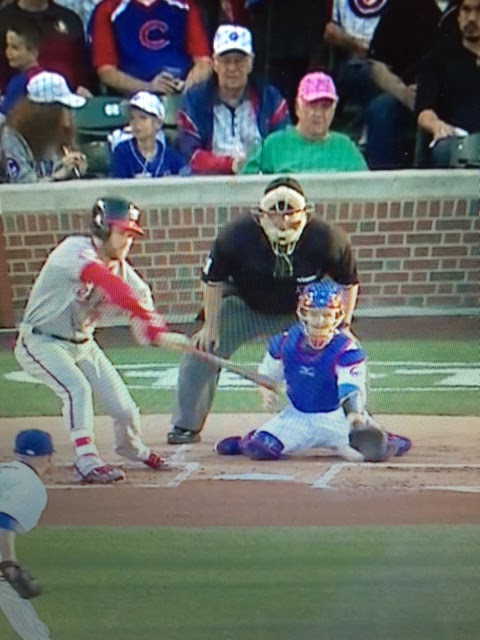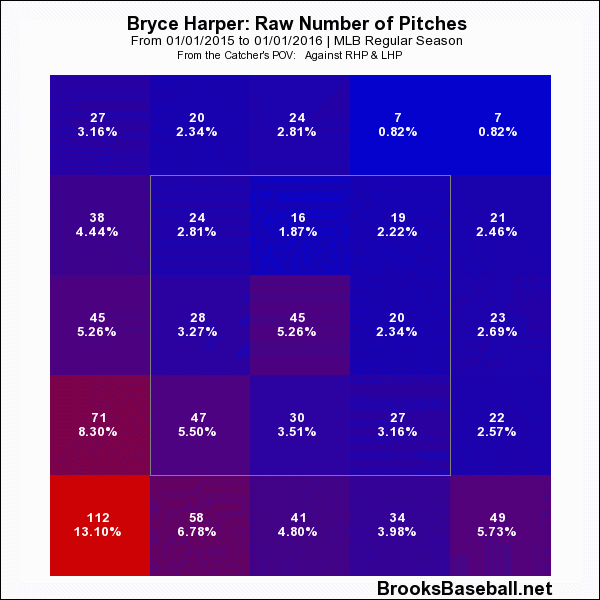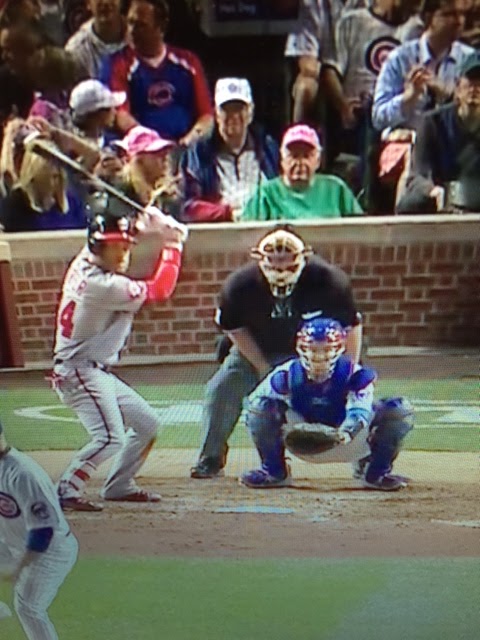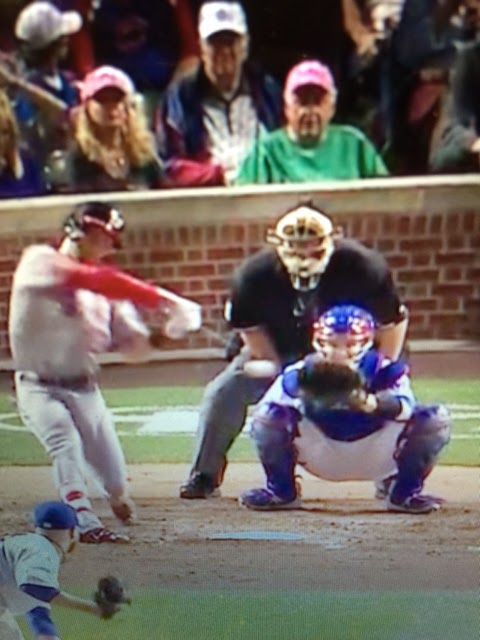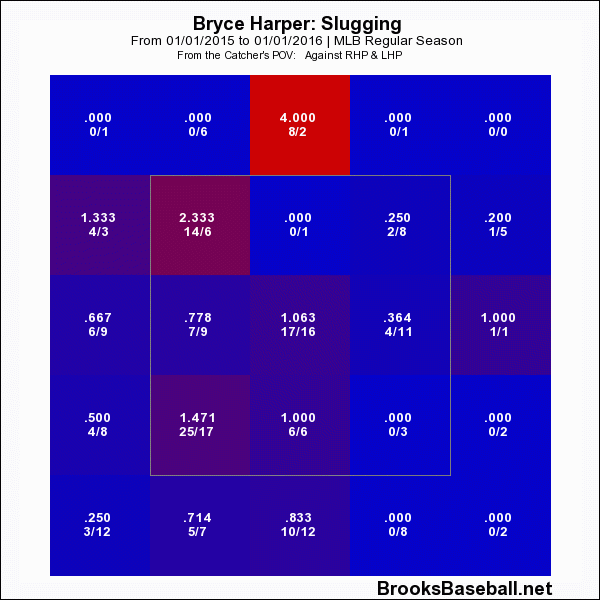Photo courtesy of Kamil Krzaczynski-USA TODAY Sports
Date: May 27
Opponent: Washington Nationals
Location: Wrigley Field
Introduction
First, the good, because as I write this, it is sunny and 80 degrees in beautiful, balmy Worcester, MA. In Jon Lester’s last two starts he has gone up against the two highest scoring offenses in the National League—the Washington Nationals and Arizona Diamondbacks—and produced the following numbers:
14.0 IP, 1.93 ERA, 1.143 WHIP, 14 K, 4 BB
Lester has pitched well enough to win both games, which should hearten Cubs fandom with hopes of meaningful September (and October) baseball. I just wanted to make mention of the overall performances, before they get drowned in mentions four-seam fastball ineffectiveness and Bryce Harper-ness.
Good, now that we have plowed through that long-windedness, let’s jump in to Wednesday night’s game.
In the course of a season, there are baseball games, and then there are baseball games. And then there are hacky and clichéd introductions to articles analyzing those baseball games.
On the calendar, Lester’s start against the Nationals was just another Wednesday in May, but it was a baseball game. It was Jon Lester vs. Max Scherzer. It was the two frontline starters for franchises that will be playoff contenders in 2015 and for what should be several years to follow. Lester and Scherzer rank in the top 5-10 of every major pitching stat since the start of 2013 and will earn roughly a combined $360 million over the next decade. And, most intriguingly to me, it was Lester staring down Matt Christopher character Bryce Harper for the first time.
Overall, Lester was strong. He matched a season high with ten strikeouts. Lester also set a season high in whiffs (16), whiffs on pitches outside of the strike zone (11, see below), and whiff percentage (15.1 percent). He got ahead of 21 of 30 batters (70 percent), his second highest total of the season. And despite traffic on the basepaths, he was able to largely minimize the damage.
However, Lester had just one 1-2-3 inning. The Nationals had plenty of baserunners (nine) and opportunities. The 34-pitch fourth inning, in which Lester threw just 17 strikes as the Nationals took a 1-0 lead, saw Lester fall victim of poor fielding and a tight, inconsistent strike zone. He allowed his sixth home run in five starts (see Key At-Bat section), with all coming on four-seam and cut fastballs up in the strike zone.
Of course, as we mentioned at the top, Lester was facing yet another outstanding offense. Entering the game, the Nationals had scored more runs than any team in the National League.
The Nationals mash the ball and get on base, unlike the Arizona Diamondbacks, Lester’s last opponent, who are scoring bunches of runs through singles and high batting average. Prior to Wednesday’s game, the Nationals ranked second in the NL in home runs (52), home run to fly ball ratio (14.2 percent), and ISO (.162), and third in slugging percentage (.418). The team was also third in walk rate (8.8 percent) and fourth in on-base percentage (.321).
While the Nationals lineup presented a formidable challenge, the marquee matchup, of course, would be Lester and Bryce Harper. Through 2015’s first quarter plus, it might be quicker and easier to list the offensive categories in which Bryce Harper does not lead the National League. Coming into the game, Harper led the NL in home runs, RBI, runs scored, total bases, ISO, slugging percentage, walks, walk rate, on-base percentage, OPS, and TAv. Overall, he entered Wednesday’s game hitting .331/.467./.734, while having considerable success against left-handed pitchers (.279/.446/.465). At the moment, and possibly for the next 15 years, Harper has a terrifying “Ken Griffey, Jr. in Little Big League” vibe when he steps up to the plate.
Entering the night, Lester had thrown four-seam and cut-fastballs to left-handed batters a combined 72.2 percent of all pitches. Against those two pitches, lefties are hitting .342/.372/.537. On the season, Harper entered hitting four-seamers and cutters from left-handed pitchers at a clip of .273/.579/.727. Even before the game began, it had all the makings of a combustible situation for Lester and the Cubs.
Harper, 1-for-2 with a home run and a walk, got the better of Lester in their first match-up. On the whole, though. Lester kept in check one of baseball’s best offenses. Keep scrolling down on your work computer to see how it all went down.
Traditional Line
7.0 IP, 7 H, 10 K. 2 BB, 1 ER (2 R)
Pitch Breakdown
106 pitches (69 strikes)
| Total | Velocity (Max) | AVG | SLG | BABIP | |
| Four-Seam | 34 | 93.2 (94.7) | .364 | .636 | .750 |
| Cutter | 30 | 90.2 (92.0) | .143 | .286 | .167 |
| Sinker | 19 | 91.9 (93.4) | .000 | .000 | .000 |
| Change-Up | 2 | 84.7 (85.1) | .000 | .000 | .000 |
| Curveball | 21 | 76.0 (79.0) | .286 | .429 | .500 |
Lester’s 60.3 percent four-seam fastball usage (34 of 106) was his second lowest total of the season. In the Trends section below (the section right after this one!), we will take a look at how Lester’s four-seam fastball, his best pitch through his first six starts, has waned in effectiveness his last four starts.
Conversely, his cut-fastball, on which Lester surrendered six extra-base hits in April, has become his most effective pitch. On Wednesday, Nationals batters were just 1-for-7. That hit—Ian Desmond’s first-inning double—came off a 90 mph cutter that hit its spot on the inside corner:
It was a good pitch, but Desmond was able to pull his hands in and shoot the ball in to the left field corner. It was just a great piece of hitting by Desmond. Head to the Trends section to see a breakdown of how Lester’s four-seamer and cutter have had a reversal of fortune.
Lester set a season-high with 19 sinkers (17.9 percent of all pitches). For the season, the sinker has been Lester’s fourth pitch, as he now thrown it 11.8 percent of the time (slightly below his 12.9 percent career average). It has been very effective, as batters have hit just .235/.235/.235. We will give more attention to Lester’s sinker in upcoming starts.
After a decrease in usage of his curveball against the Diamondbacks, Lester threw 21 (19.8 percent) against the Nationals. Lester has now thrown at least 21 curves in three of his last four starts. Though Lester did surrender two hits off the pitch, its return was mostly a welcome sight. He and David Ross showed confidence in the pitch early, going to it in the first inning with Harper at the plate and a runner in scoring position at second base.
In this first battle with Harper, Lester started him with four straight fastballs.
On the 1-2 pitch, David Ross set-up about as low and away as possible:
Lester unleashed a curveball so nasty that even the NL leader in walks and walk rate could not lay-off:
In Lester’s last four starts, he has thrown his curve 19 percent of all pitches, with a very impressive strikeout rate of 42 percent. Against the Diamondbacks, Lester saw a decrease in first-pitch strikes and whiffs from his fastballs, and his curveball usage dropped. However, against the Nationals, Lester, was able to get his fastballs over for strikes and get ahead of batters, and perhaps not coincidentally, his curveball usage increased.
Trends
We interrupt this regularly scheduled Trends dissection of the barrage of home runs on Lester fastballs to present a special airing of A Tale of Two Fastballs, now in Technicolor!
As we have detailed in great annoying lengths in Lester’s last four starts, the ball has been leaving the park at alarming rates when Lester throws his four-seamer. In starts 1-6, the four-seam fastball was Lester’s best pitch, and he went to it with the greatest frequency:
| Frequency | AVG | OBP | SLG | K% | BB% | Whiff % | |
| Starts 1-6 | 43.6% | .185 | .241 | .259 | 29.3% | 6.9% | 7.5% |
| Starts 7-10 | 37.0% | .371 | .405 | .771 | 27.0% | 5.4% | 4.49% |
The four home runs allowed during the four games suggest Lester’s is struggling to keep his four-seam fastball down, as we covered after his last start. Considering Lester throws his four-seam fastball the most of any pitch in 2015 and his career, the recent struggles remain worth monitoring. Despite the decreased effectiveness, Lester’s four-seam velocity in starts 7-10 (93.02 mph) has actually increased from starts 1-6 (92.65).
During this same period, Lester’s cutter has become very effective:
| Frequency | AVG | OBP | SLG | K% | BB% | Whiff % | |
| Starts 1-6 | 25.7% | .400 | .438 | .644 | 20.8% | 4.2% | 9.4 % |
| Starts 7-10 | 30.1% | .188 | .316 | .313 | 18.4% | 15.8% | 14.96% |
Lester’s walk rate has increased significantly, but he has also increased his whiff rate and cut down on extra-base hits. As we have discussed since the beginning of May, Lester has steadily improved his ability to hit his spots with the cutter and induce batters to chase outside the strike zone.
Key At-Bat/Sequence
Inning: Sixth
Score: 1-0, Nationals
Situation: One out, nobody on base
Batter(s): Bryce Harper
In Harper’s first at-bat, as we detailed above in the Pitch Breakdown section, Lester and Ross committed to living exclusively down and away from Harper. This is hardly a novel approach, as most pitchers in 2015 have attempted this exact same approach:
After falling behind 2-0, Lester induced a Harper whiff on an 89 mph cut-fastball at the bottom of the strike zone. On 2-1, Ross set-up low and away:
Lester, though, missed the spot with a 93.6 mph four-seam fastball at the belt:
Harper took advantage of the missed location, and for the second straight night he put one into Wrigley’s left-field bleachers. The Nationals had a 2-0 lead, which was two runs too many to come back from against Scherzer.
As you can see below, Harper has made pitchers regret being up on the outer half of the plate:
In 2015, left-handers have found some success against Harper with the sinker, throwing it 22 percent of the time, and holding him to .250/.357/.333. As we detailed above, the sinker has been extremely effective for Lester in 2015. However, despite Harper’s struggles and Lester’s success, he did not throw a single sinker to Harper in three at-bats.
Keep In Mind
Lester has pitched well enough to win against the two highest scoring teams in the NL. He might have walked away from those two starts 0-1 with a no-decision, but both starts still capped off a tremendous May:
| Avg. Start | ERA | WHIP | OPS | K% | BB% | % of Batters Ahead | |
| April | 5.42 IP | 6.23 | 1.569 | .810 | 25% | 5.2% | 51.6% |
| May | 6.83 IP | 1.76 | 1.171 | .667 | 21.5% | 7.0% | 66.3% |
During the past month, Lester pitched deeper into games while getting ahead of more batters and allowing few baserunners. He made six starts, and went seven innings in five of those games. If there were any doubts in April about Lester being a staff ace, May demonstrated he is as good as he came advertised in December.
Conclusion
If Addison Russell and Starlin Castro turn the double play in the fourth inning, and if the Cubs offense was facing any other Nationals pitcher, we would likely be recapping Lester’s fifth win of the season. Lester’s 1.76 ERA in May was his second lowest in a month since the beginning of 2011. And if you remove the runs scored on the six home runs (absurd, I know, but fun), Lester had a 0.22 ERA over the six starts. Lester is rolling, and now just needs some help from the offense.
Anyways, greetings from historic downtown Worcester, home of a few pizza places! Have a great day. Wish you were here.
-Andrew
Season-to-Date
4-2, 3.30 ERA, 1.309 WHIP, 22.8 K%, 6.3 BB%
Next Start
Tuesday, June 2 at Miami Marlins (Brad Hand)

